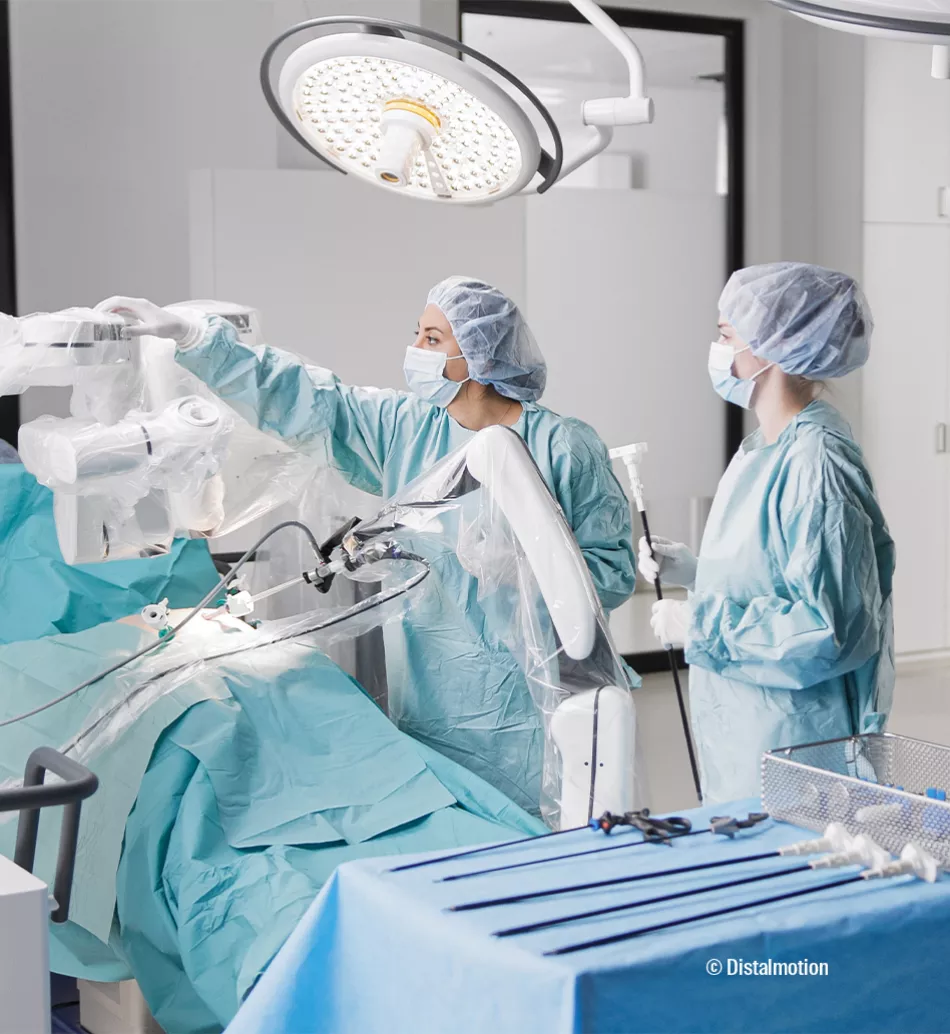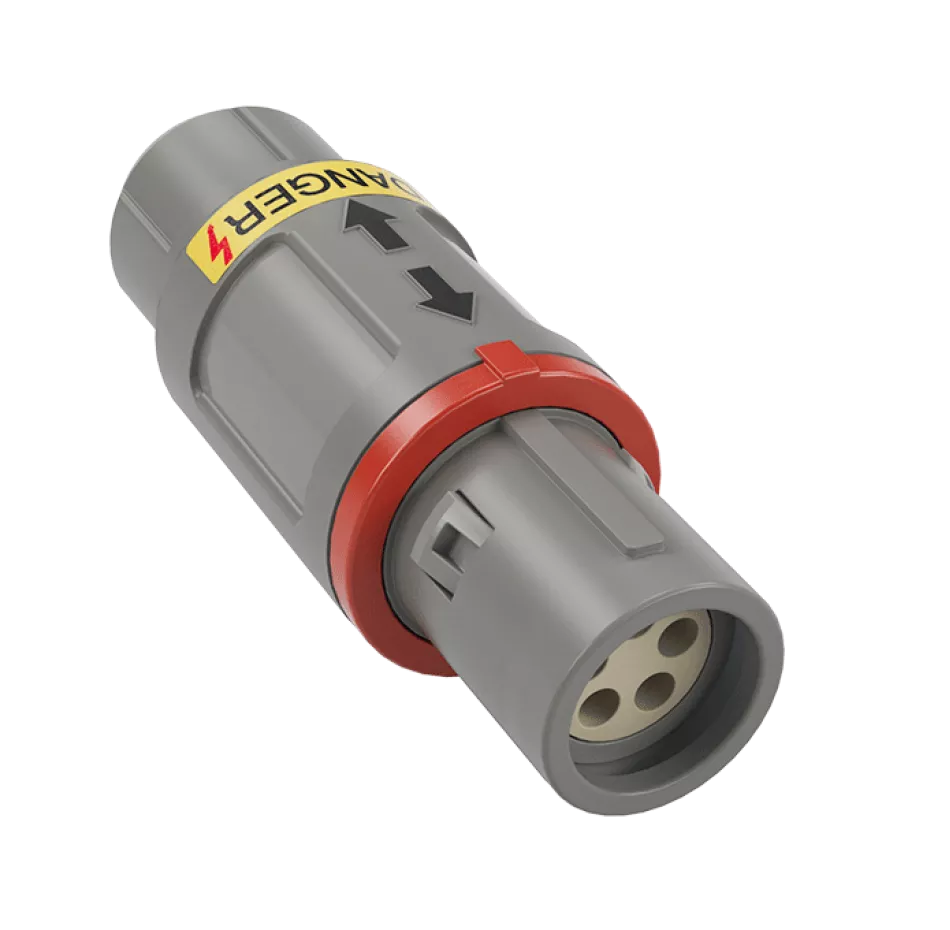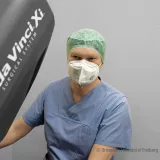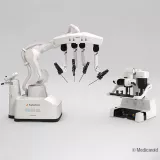Dr. Robot will operate on you

Robotic surgery (also known as robot-assisted surgery) is one of the fastest growing specialities in surgical medicine today : a multitude of companies have set out to conquer this rapidly evolving niche market. CONNECTED will present two of them, very different, but equally ambitious. We have also interviewed an expert on the use of robots in the intimate setting of the human body.
The unconscious and seriously injured hero is rushed onto the operating table. Straightaway, robotic arms start spinning around him, cutting away his clothes and treating his multiple wounds.
Surgical robotics is not quite there yet, but it is increasingly present in our daily lives. Surgeons have been using it in more and more procedures – in orthopaedics, gastro-intestinal and cardiovascular surgery, urology and gynaecology.
This seemingly science-fictional technology has a longer history than we might often imagine : robotics has entered surgery almost forty years ago.
Arthrobot was developed and used in Vancouver in 1983 in orthopaedic surgery, for dozens of arthroscopies (minimally invasive joint operations). From the mid-eighties, robots have officially entered operating theatres. The pioneers were Puma 260 (Unimation), Scara and Robodoc (the concepts were developed by IBM and California University, today under Think Surgical), and also Aesop and Zeus (Computer Motion).
Computer Motion merged with Intuitive Surgical, and Zeus was replaced by the Da Vinci system, the first version being launched in 1998. Two years later, Da Vinci became the first complete system approved by the FDA. For many years, Intuitive benefitted from an almost total monopoly in this new sector. Even today, Da Vinci is still largely dominant.
Just like GPS and the internet, surgical robotics is a concept initially developed by the military sector (more precisely by US agency DARPA). The aim was to enable surgeons to operate wounded soldiers from a distance. Therefore, the console, handled by the surgeon, is separated from the robot which reproduces his operating movements on the patient.
Limited by communication technologies, telesurgery has not taken off yet. However, surgical robotics has convinced several areas. Tool miniaturisation (they pass through tubes, trocars that are approximately 1 cm) and their high degree of articulation makes it possible to reach low-access areas (current in gynaecology and urology), much easier than for human hands. This advantage makes the robot a natural tool for laparoscopy, this minimally invasive technique, widespread since the nineties, which involves passing instruments and a camera via small incisions.
Robotic arms smoothing any potential shaking of the surgeon and the field of vision magnified by 3D high-definition views provide unprecedented precision. An ideal solution for particularly critical surgery (brain) or meticulous implant procedures. German researchers announced in early 2020 a successful “ super-microsurgery ” operation. With Musa, a robotic device developed by Microsure, they performed an operation on 0.3 to 0.8 mm blood vessels, which substantially outperforms the best surgeons (even with the assistance of a classical robot).
For doctors, robotic assistance brings great comfort (see our interview with a surgeon, page 10). For patients, there are surprisingly few documents on or proof of the benefits. A multitude of research studies even conclude that there isn’t any significant difference in efficiency (length of stay, eventual complications) between classical and robotic surgery. However, there are substantial extra costs for hospitals (as well as insurance companies and patients).
This grey zone does not hinder market momentum. Analysts estimate that it should rise from the current 5 billion to 15 billion by the end of the decade. For the past few years, a multitude of start-ups and companies have been launched, positioning themselves with better targeted and accessible solutions than Intuitive’s “ Rolls Royce ”.
Among these, the English company CMR Surgical proposes its Versius system, the Spanish Rob Surgical ready to launch its Bitrack. Swiss Distalmotion has launched its Dexter (see our article on page 14). Canadian Titan Medical is working on Sport, its single-orifice system. US companies Stereoaxis and Zimmer Biomet have been selling Genesis (a magnet-system to guide magnetic catheters) and Rosa (following the acquisition of French start-up Medtech), respectively.
Things have been moving a lot with big technology companies as well. Stryker has launched its Mako robot ; Medtronic its Hugo. Johnson & Johnson created Verb Surgical (initially with Google) and proposes the Ottawa system. Siemens acquired the Corindus system. Medicaroid, founded by robotics leader Kawasaki Heavy Industries, has introduced its hinotori, first surgical robot “ Made in Japan ” (see our article on page 13) on the Japanese market.
All of them contribute to accelerating the development of surgical robotics, which also benefits from progress in miniaturisation, medical imaging (and telecommunications for telesurgery). Artificial intelligence and machine learning have also started to be used. By digesting a huge amount of physiological and operational data, they provide better “ knowledge ” of the human body and surgical movements, helping to better prepare and guide operations.
The fantasy of the robot surgeon remains.
Doctors and manufacturers underline that current solutions are only tools for live and obedient reproduction of human movements. They postpone to a distant future the prospect of autonomous robots. Just like only 10 years ago the idea of autonomous vehicles in chaotic road traffic was rejected.
Today, many people think that traffic would be much safer without human drivers. Thus, it is hard not to imagine that robot surgeons will once also overcome technological, legal and psychological obstacles to perform all alone or almost, more and more procedures.



